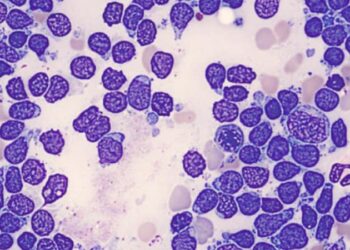TOPLINE:
After the recent implementation of acuity circle (AC)-based allocation policies, overall mortality and dropout rates among severely ill liver transplant candidates decreased; however, candidates with chronic end-stage liver disease (ESLD) wait-listed at centers in less populated regions faced a higher risk for death than those at centers in more populated areas.
METHODOLOGY:
- In February 2020, the Organ Procurement and Transplantation Network replaced the region-based allocation system with AC-based allocation policies using fixed nautical mile distances from donor hospitals for more equitable organ distribution, but this approach overlooked population density and size, potentially creating geographic disparities in donor availability.
- Researchers conducted a US nationwide retrospective cohort study to assess the relationship between population size within the AC of liver transplant centers and waiting list outcomes for adult patients with acute liver failure (ALF; listed as status 1A) or with chronic ESLD and a Model for End-Stage Liver Disease (MELD) score ≥ 37 at the time of listing.
- Candidates were wait-listed between June 2013 and May 2023, and divided into pre-AC era and post-AC era groups.
- The population size was analyzed within defined radii around liver transplant centers (150 nautical miles for participants with high MELD scores and 500 nautical miles for those with ALF); the population size surrounding the liver transplant centers where candidates were wait-listed were categorized into low-, middle-, and high-population size tiers.
- Primary outcomes were waiting list results, such as receiving a liver transplant, removal from the list due to death or clinical deterioration, and removal due to clinical improvement.
TAKEAWAY:
- Researchers analyzed 10,486 transplant candidates (mean age, 48.5 years; 60.5% men), with 6142 from the pre-AC era (1581 with ALF and 4561 with high MELD scores) and 4344 from the post-AC era (749 with ALF and 3595 with high MELD scores).
- Overall mortality and dropout rates among severely ill liver transplant candidates with high MELD scores decreased from around 20% to 16% or less after the implementation of AC-based policies; similar trends were observed among patients with ALF.
- Compared with candidates with high MELD scores listed at centers in middle-population size tertiles, those listed at centers in the low-population size tertile showed an increase in waiting list mortality in the post-AC era (adjusted odds ratio [AOR], 1.68) but not in the pre-AC era.
- Doubling of the population size was associated with a 34% reduction in the odds of mortality or dropout (AOR, 0.66).
- However, for patients wait-listed with ALF, low–population size centers within a 500 nautical mile radius did not show disparities in access after the implementation of AC-based policies.
IN PRACTICE:
“The increased risk of waiting list mortality and dropout underscores the need for policy adjustments to promote equity in [liver transplant] allocations and ensure access for populations outside metropolitan areas,” the authors wrote.
SOURCE:
This study was led by Tomohiro Tanaka, MD, MPH, Division of Gastroenterology and Hepatology, Carver College of Medicine, University of Iowa, Iowa City, Iowa. It was published online on March 25, 2025, in JAMA Network Open.
LIMITATIONS:
The retrospective design and reliance on the Organ Procurement and Transplantation Network Standard Transplant Analysis and Research file may have introduced residual confounding. The study findings may have been confounded by the COVID-19 pandemic, although sensitivity analyses across post-pandemic years yielded consistent estimates. Study patients were classified based on their MELD scores at the time of listing, and therefore, did not include those who initially had low MELD scores but later experienced deterioration.
DISCLOSURES:
This study was supported by a Mentored Clinical Scientist Research Career Development Award from the Agency for Healthcare Research and Quality. One author reported receiving grant support from the Agency for Healthcare Research and Quality.
This article was created using several editorial tools, including AI, as part of the process. Human editors reviewed this content before publication.
Source link : https://www.medscape.com/viewarticle/geographic-inequities-persist-us-liver-transplant-system-2025a10007c0?src=rss
Author :
Publish date : 2025-03-27 09:28:00
Copyright for syndicated content belongs to the linked Source.














